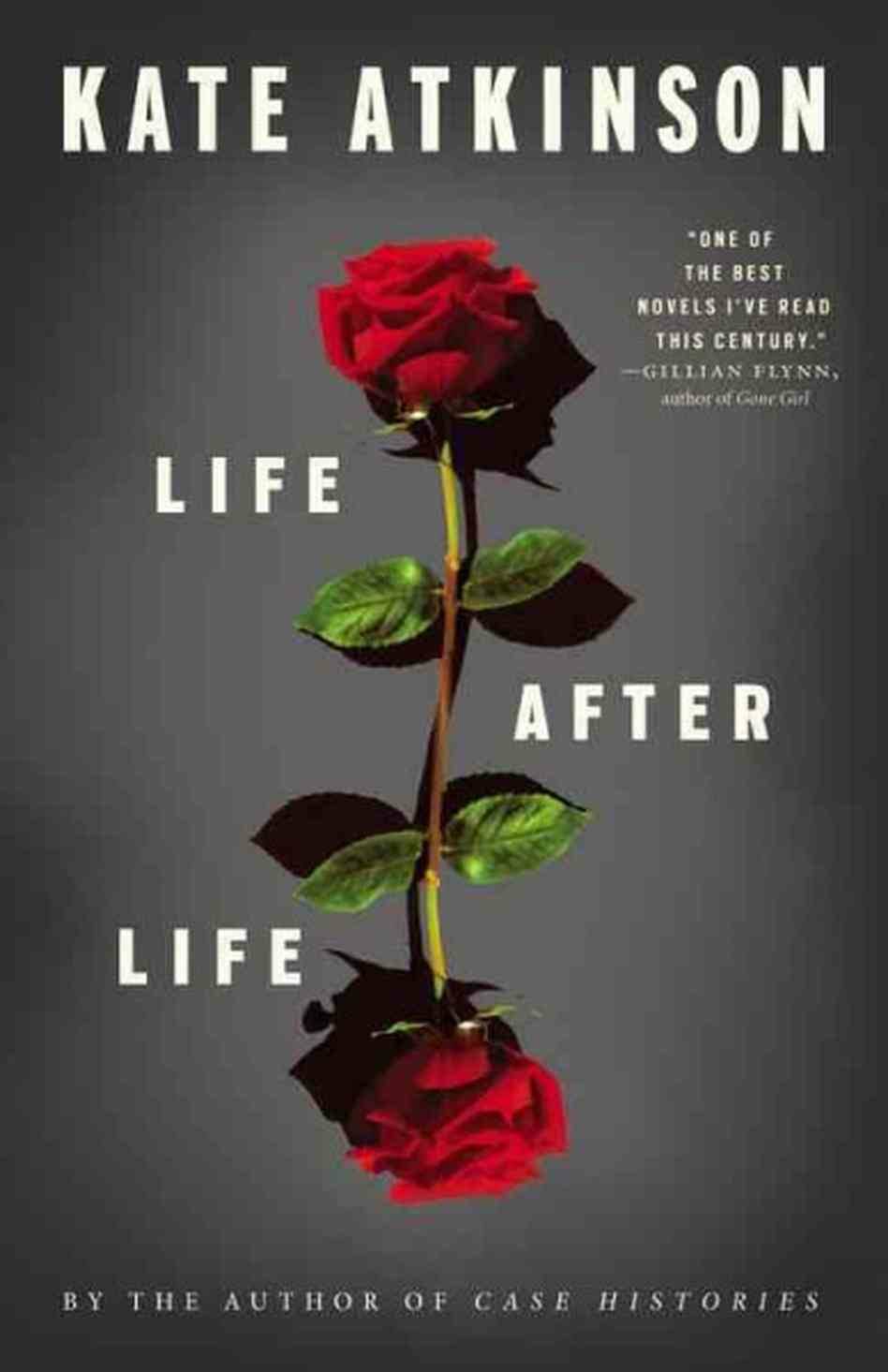 Kate Atkinson’s 2013 novel Life After Life has received much praise. It sits near the top of several lists of the best books of the year (#6 in Goodreads). The basic idea is this:
Kate Atkinson’s 2013 novel Life After Life has received much praise. It sits near the top of several lists of the best books of the year (#6 in Goodreads). The basic idea is this:
Ursula Todd is born over and over again, in England, on a snowy night in 1910. She then dies over and over again, each time in a different manner. She gradually grows more and more aware of her previous lifetimes. In her first few repetitions, she merely feels fear when the event which caused her death is imminent and manages to avoid it, but eventually she begins to have actual memories of her lifetimes and learn more consciously from them. This causes her life to take a different path, and a different death to overtake her. With each life, Atkinson fills in some of the details of Ursula’s family and the world she inhabits. Thus Ursula gets the ultimate do-over, until she creates an opportunity to kill Hitler, which is actually where the novel opens.
This novel reminded me a lot of the movie Groundhog Day. Like that movie, it attempts to satisfy the ultimate fantasy, the idea that we could have an opportunity to go back and redo our lives, armed with what we now know. If only, we think to ourselves, I hadn’t said that, hurt that person’s feelings, or taken that walk, then my life would be wonderful. If only I’d never met so and so. If only I’d finished that college degree. Well, you get the picture.
Since this novel takes place in England and, in at least some of her lives, Ursula moves to London, where she spends World War II, we are treated to a slowly filled-in portrait of both the English countryside and then London itself as the Germans bomb it to pieces. We learn about the awful older brother, the wonderful sister and younger brother, and the eccentric Aunt. At the same time, we explore philosophical questions, such as: are we all repeating our lives over and over (apparently yes, since it isn’t only Ursula who does things differently each time around, although the others seem unaware that they are repeating). It also looks a little at women’s role in the workplace and home in upper class England at the time.
Each life begins with Ursula’s birth on a snowy day, and each time something a little different either occurs or gets explored, to keep the event interesting and provide the perspectives of the mother, doctor, housekeeper, etc. Luckily for the reader, that’s about the only thing which repeats (unlike in Groundhog Day), because Atkinson assumes we can recall the events she leaves out. It would be tedious otherwise. The fun comes in reading about the device which allows Ursula to avoid the death event of her previous life.
This is a wonderful concept. It’s clever, and the number of different ways Ursula dies is great (none of the deaths are made to seem particularly gruesome or painful). I found myself reading onward just to find out how she would die next. I liked it enough to give it three and a half stars, but I really wondered why it’s gotten as much praise as it has. It often drags. Ursula is not a particularly interesting person, nor does she come across as very engaged in her life. Atkinson’s prose floats about the drama, reading like a ledger of actions, dispassionate for the most part. Turning to a random page, I read:
The office was a tedious, rather irritable place these days – fatigue, probably, due to the cold and the lack of good, nourishing food. And the work was tedious, an endless compilation and permutation of statistics to file away in the archives somewhere—or to be pored over by the historians of the future, she supposed. They were still “clearing up and putting their house in order,” as Maurice would have it, as if the casualties of war were clutter to be put away and forgotten.
There’s more, but I got bored just typing this. It isn’t all this dull, of course. My real problem with the novel is the way the very first scene with Hitler comes about. In most of the novel, Ursula goes through similar lives each time, tweaking events to arrive at different ends. However, she has only three lives in which she goes to Europe, and only one in which meeting Hitler is described (a life in which she doesn’t kill him). Since she recalls each of her lives only a little, how did she recall enough of that one to know how to get close enough to kill him? Why doesn’t she live that life over and over again, not quite succeeding until the final one? That would seem more consistent with the whole re-lived life concept as carried out in the rest of the book. Of course, Hitler gets do-overs too, so she would have to kill him over and over again, in life after life, I suppose, though we are spared this detail.
Someone should do a sequel, portraying what happened in Europe after Hitler’s murder. With no Hitler, would there be no World War II, no concentration camps, and no nuclear weapons? Or would it all have occurred anyway? Anyone up to the task?
related posts:
Not the Booker prize 2013: Life After Life by Kate Atkinson (oh, and read the comments, which pretty well agree with me)